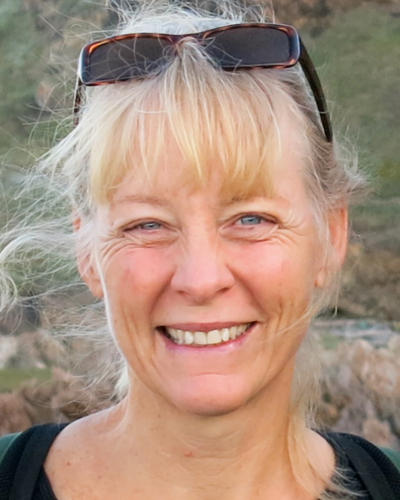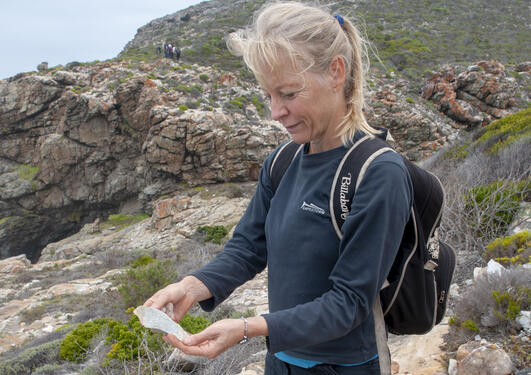Klasies River main site
Human fossils, stone tools, faunal remains and an abundance of shell are but some of the stunning finds from Klasies River main site, situated in the Eastern Cape region, South Africa. The current excavations are led by Professor Sarah Wurz, University of the Witwatersrand, South Africa.

Main content
Klasies River main site (KRM) is situated in on the Tsitsikamma coast, close to the Klasies River mouth. The site consists of two caves (named Cave 1 and 2) and three shelters (named Cave 1A, 1B and 1C). Groups of humans visited the site repeatedly over long time spans.
Extensive marine archive
Early modern humans used the site from approximately 120 000 to 59 000 years ago, and the site was more recently visited by groups of hunters, gatherers and fishers during the Later Stone Age up to today. The shoreline is about 6 meters from Cave 1 today. Fluctuations in climate and sea level during prehistory means that the sea at times would have been further from the site. This would also have affected the flora and fauna in the area.
Human activities have left an extensive archive of 20 meters of archaeologically important deposits (layers).The environment in times of human presence and absence can be reconstructed in part from bone fragments, owl pellets and other traces left behind by humans or visiting birds and animals. This is among the research currently conducted at Klasies River main site.
Lifeways by the sea
Klasies River main site became known to archaeological researchers in the 1960’s. The first excavation phase in 1967-68 was lead by Ronald Singer and John Wymer. South African archaeologist Hilary Deacon led the excavations of and research on the site between 1984 and 1995 and Sarah Wurz started a new excavation phase in 2013.
The extensive excavations of Klasies River main site has provided fantastic insight into life in the Middle Stone Age. Several fossils of early modern humans were found at the site and some of these were among the oldest Homo sapiens fossils in Africa. Additionally, stone tools, shellfish, bone fragments and other finds revealed much new information on human lifeways in prehistory.


